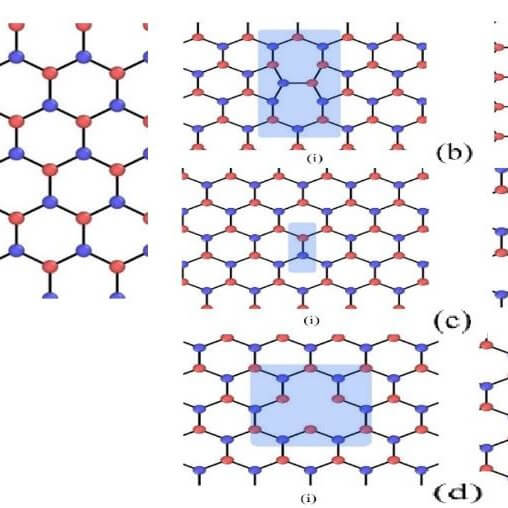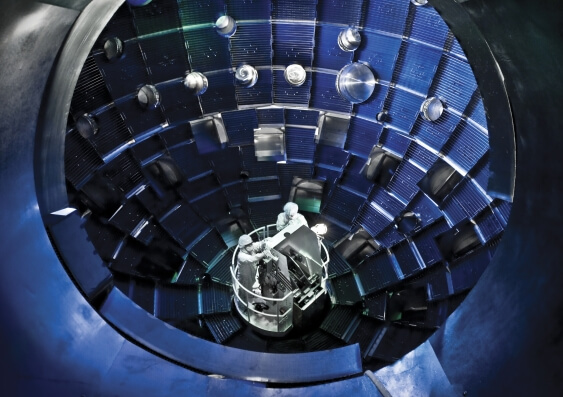Boron Nitride Nanotubes: a game-changer?
Boron nitride nanotubes are a relatively new technology with the potential to revolutionize many industries. Boron nitride is a ceramic material that can be used in high-temperature applications. It has excellent thermal stability and corrosion resistance, but it can also be brittle. Boron nitride is often used for insulation in the aerospace industry thanks to its ability to withstand extreme temperatures while still being lightweight.

What is Boron Nitride?
Boron nitride is a synthetic compound that, until recently, was obscure. It is used widely in the electronics industry for its hardness and heat resistance.
Boron Nitride is a hard, heat-resistant ceramic that is available in many forms, including pellets and powder. It has an excellent strength-to-weight ratio and can withstand temperatures up to 3000 degrees Fahrenheit. Additionally, this is possible without any change in its properties. This makes it one of the most versatile materials on earth today. It is now being touted as an eco-friendly alternative to Silicon Carbide (SiC) by companies like 3M, not least because it is up to 10 times cheaper than SiC, with comparable performance.
Boron Nitride’s strength makes it an excellent candidate for use in products such as automobile parts and aircraft engines. The nanotubes are also able to filter water, making them useful in areas with limited access to clean drinking water.

Boron Nitride’s uses are practically endless ranging from the above to fireproofing buildings, insulation for electronic components, or even as a protective coating for kitchen knives. All this while being eco-friendly.
Environmentally-friendly
Boron Nitride can be manufactured at lower temperatures which means less energy is required in production. This makes it more environmentally friendly too. With all these benefits, boron nitride is the next big thing in high-tech materials manufacturing.
The physical properties of boron nitride make it an ideal candidate for the production of semiconductors. They can be found in consumer electronics devices such as smartphones or laptops.
Boron Nitride Nanotubes
Boron Nitride Nanotubes (BNNTs) are a type of 2D material with a one-atom-thick sheet of BN in-between the hexagonal lattice of graphene. The resulting structure is an interconnected network that is rolled up into tubes or stretched to form flat sheets. BNNTs have potential applications in electronics, energy storage, and water purification. They can be used for 3D printing because they’re flexible and strong.

Boron nitride nanotubes are a novel type of material that is attracting much attention for their potential use in electronics. They can provide an excellent alternative to silicon. The latter is the standard base material for semiconductors since its discovery in 1947. It is possible to synthesize Boron nitride nanotubes into any desired shape and size. We can add high strength and stability at room temperature, making them an exciting prospect for future development in this field.
Nanotubes are a revolutionary material
The nanotubes are a revolutionary material that has the potential to revolutionize many industries including electronics, medical, aerospace, and automotive. BN nanotubes offer significant benefits over current technologies in all three of these areas. For example, they are a part of air filters for cars because they trap more particles than conventional filters do. This is due to their peculiar structure which traps particles with greater efficiency than other materials.
They can also be used as an insulator when placed on semiconductor chips for electronics purposes. However, it does not cause any change in electrical properties like some similar materials to do. It has a fascinating property. They act as both a conductor and insulator at the same time depending on the orientation of charge carriers. Boron nitride nanotubes are thus able to act as molecular sieves. They can trap specific molecules depending on their size and chemical properties while letting other particles through.
Such advancements in technology will help make new devices like sensors, air filters for cars, or medical equipment. They would be significantly cheaper than traditional alternatives with higher performance capabilities.
Advantages of Boron Nitride
Boron nitride nanotubes are a promising new material for high-strength composites. They have the potential to be 50% stronger than traditional steel and 10 times more elastic. This means they can withstand the greater strain. Boron nitride nanotubes also have excellent thermal conductivity, which could reduce the amount of energy lost during power transmission by up to 60%. The properties of boron nitride nanotubes make them an attractive candidate for use in vehicles as well as infrastructures such as bridges and buildings.
The material has many unique properties that make it useful for these purposes. These include high strength, thermal conductivity, chemical inertness, low density, and cost-effectiveness.
The main advantage of boron nitride nanotubes over other materials is their high tensile strength which can exceed 60 GPa (gigapascals). This means they can withstand both compressive and tensile forces in compression tests.
Boron nitride nanotubes are also very resistant to fracture. Hence, they are used for impact-resistant devices such as helmets or bulletproof vests. They have great potential applications in the field of energy because of their ability to withstand high temperatures. It will allow them to work under extreme conditions that would destroy other materials like ceramics and carbon fibers.
Thermal conductivity of the material
Another advantage is thermal conductivity. Boron nitride nanotubes come with a thermal conductivity ten times greater than copper. Hence it is an excellent conductor for both heat and electricity when placed between two electrical contacts at low pressure (less 100kPa). Because boron nitride nanotubes are chemically inert, they also protect other materials from corrosion. Boron nitride nanotubes have a low density which makes them lighter than steel for example.
However, due to its high strength-to-weight ratio, this material is also stronger than the latter. Boron nitride nanotube’s resistance to fracture means that any impact on these surfaces would not cause flaking. It also does not chip like traditional metals and composites during accidents such as car crashes.

Boron nitride nanotubes have many advantages over other materials, including their lightweight and strength. They are also cheaper to produce than carbon nanotubes. Most importantly, they can be used as a replacement for steel in the construction of buildings and bridges.
The use of boron nitride nanotubes would greatly reduce the weight that structures need to bear. It is especially important on top-heavy structures like skyscrapers without sacrificing strength or durability. This could result in new building designs with less material and an overall lower cost of production.
Emerging material of the future
Boron nitride nanotubes are an important, emerging material of the future. They have many properties that make them attractive for use in a wide range of applications, including gas separators, water purifiers, and even food packaging. One of their most attractive features is their ability to absorb different wavelengths of light with high efficiency. This property makes them useful as coatings on solar cells or windows for buildings and cars.
Whatever your industry is you will find boron nitride nanotubes have something unique to offer. It may help improve your business process or product. Boron nitride nanotubes are a game-changer.
High strength, thermal conductivity, chemical inertness, low density, and cost-effectiveness are the main advantages of Boron Nitride Nanotubes to other materials. Boron Nitride Nanotubes can be used for impact-resistant devices such as helmets or bulletproof vests because they have high tensile strength and resistance to fracture. Boron Nitidee nanotubes also exceed 60 Gpa (gigapascals) which means they can withstand both compressive and tensile forces. Boron Nitride Nanotubes are chemically inert, making them an excellent corrosion protector for other materials; they can be used to protect metal or plastics from degradation in the environment (e.g., food packaging).
Boron Nitride Nanotube’s thermal conductivity is ten times greater than copper’s, which makes it an excellent conductor of heat and electricity when placed between two electrical contacts at low pressure (<100kPa). Boron nitride nanotubes have a low density but their strength-to-weight ratio is higher than steel so they will also replace metals like aluminum and titanium with less material needed during manufacturing processes that require high strength properties.
BNNT: A Game-Changer?
They are in many different types of industry including semiconductors, energy storage, water purification, aerospace insulation materials. They are an eco-friendly alternative to silicon carbide (SiC). Boron nitride nanotubes have high thermal stability and outstanding thermal conductivity. This property makes them suitable for applications in the semiconductor industry.
Boron Nitride Nanotube’s chemical inertness allows ion implantation on the surface without causing damage from contaminants. The nanotubes can absorb light. Hence, making them useful coatings on solar cells or windows of buildings and cars. Mainly because they can absorb ultraviolet radiation that is harmful to human skin. Boron nitride nanotubes make excellent gas separation membranes because they allow hydrogen but not methane through while blocking other gases such as carbon dioxide (CO).
Conclusion
Boron nitride nanotubes are a game-changer for many industries. These materials have the potential to revolutionize everything from semiconductors to smart clothing. And they can create a new generation of sensors that detect air pollution or bacteria levels in the water.
Boron nitride nanotubes are the next big thing in materials science. While they have only recently entered the spotlight as a game-changer with many potential uses across industries, it is unclear how quickly they will become ubiquitous despite their rapid development.





